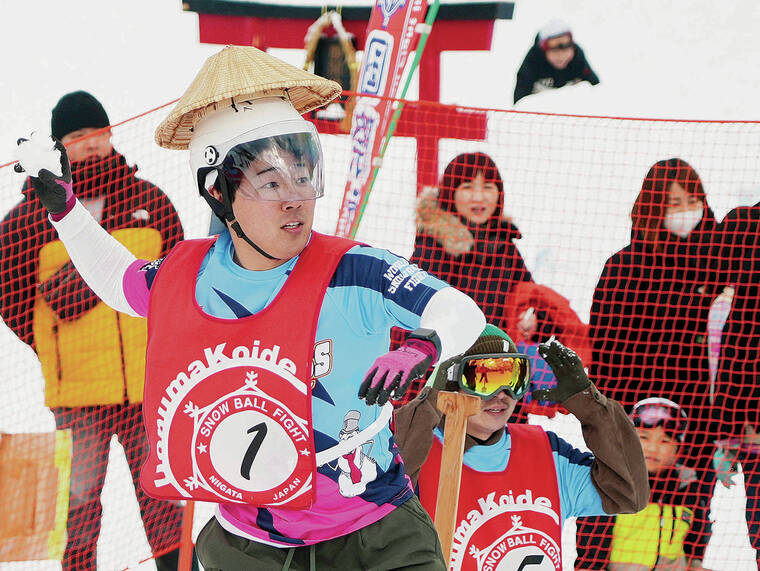Surfing makes a splash in urban Japan

JAPAN NEWS/YOMIURI
Above, a surfer rides an artificial wave at Citywave Tokyo in Shinagawa Ward. The facility is filled with office workers after work, families on the weekends and tourists from overseas.
TOKYO >> The sport of surfing is riding high as the world anticipates its Olympic debut at the 2020 Tokyo Games. Facilities and equipment that enable surfers to enjoy the sensation of catching a wave without having to go to a beach are becoming popular, irrespective of a wave rider’s experience.
On a weeknight in early summer, nine surfing buddies rode 3-foot waves at the Citywave Tokyo artificial surfing facility in Shinagawa Ward.
“I can ride the waves many times. It’s fun,” one surfer said.
“The facility is located in the city, so it’s convenient,” said another.
Citywave Tokyo opened a year ago in the Sporu Shinagawa Oimachi sports facility. It runs water into a pool with an uneven floor that helps facilitate the surfing experience. Visitors can rent surfboards and wet suits, and those new to the sport can safely try it out using assist bars. The site is open from morning to night, and 6,200 yen ($57) will get a customer 50 minutes in the water. Office workers crowd the space after work, as do families on weekends. The facility also draws tourists from overseas. In fact, it’s so popular it has been 80% booked throughout the summer.
According to the Sasakawa Sports Foundation, over the past few years, the number of Japanese people who surfed at least once annually had been on a downward trend. But in 2018, numbers were on the upswing with 730,000 people saying they surfed at least once that year.
Don't miss out on what's happening!
Stay in touch with breaking news, as it happens, conveniently in your email inbox. It's FREE!
That popularity is reflected at packed beaches.
“Popular beaches in Kanagawa, Chiba and other prefectures in the Tokyo metropolitan area are so crowded on weekends that I can ride only a few waves for a short time,” said one surfer.
Given those circumstances, venues such as Citywave Tokyo that allow people to easily participate in the sport — albeit on land — have been attracting attention.
Then there are surf skateboards, said to have been developed in the late 1990s for surfers who wanted to practice surfing on land. The boards are popular among multiple generations.
Unlike ordinary skateboards, the front wheel axles of these boards sway as a user shifts his body weight, allowing for winding turns that mimic wave riding. For newbies, a wide board and large tires offer stability. Boards from the U.S., Japan and other countries are sold in Japan.
The Murasaki Sports Queen’s Square Yokohama store sells various brands of surf skateboards for 20,000 to 40,000 yen ($185 to $370). Customers can come in and try them out freely.
According to staffer Masahito Miyagi, children, women and folks in their 70s who have never surfed buy them and practice at skateboard parks.
“Even beginners can ride them relatively easily,” Miyagi said.
Meanwhile, Surf Fit, an exercise program that originated in the U.S., is popular among women in their 20s and 30s. A surfboard fixed to three balance balls helps develop core strength while employing movements specific to surfing, such as lying on a board and paddling, and taking off, when a surfer moves into a standing position to catch a wave.
Yasutaka Suzuki, an editor at Surfin’ Life magazine, said the various land-based options expose surfing to people who might not otherwise have had interest in the sport.
“The refreshing and exhilarating feeling, as well as the convenience that allows people to practice regularly, are likely attractive to people with and without experience, and that’s why such facilities and equipment are becoming popular,” Suzuki said.




